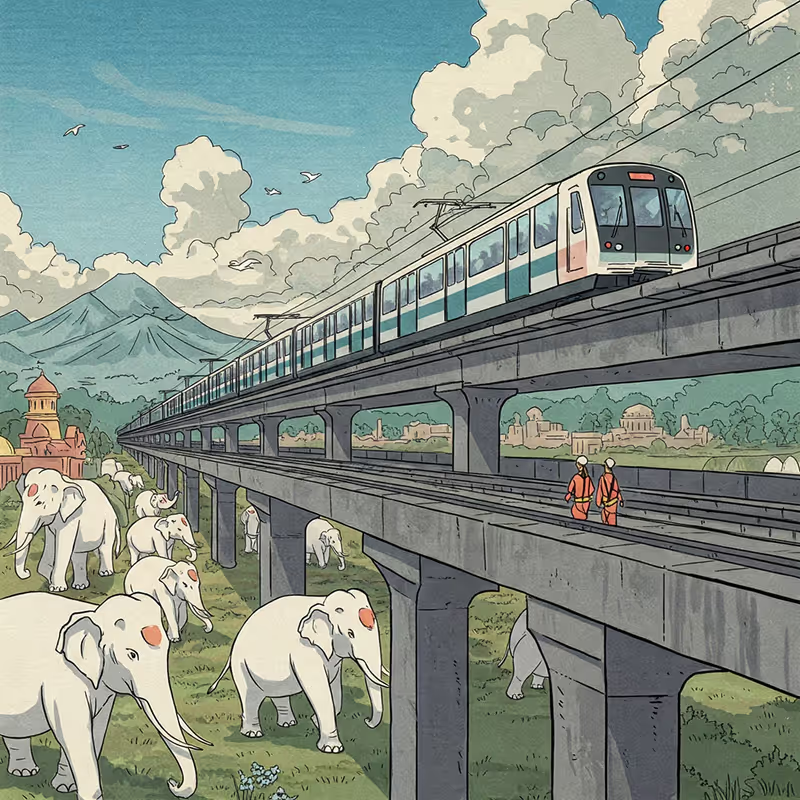I recently stumbled upon an economic times article: India's shiny new metros are costly white elephants.
I have notes.
The author presents three key arguments: Metros vs. suburban rail, Metros vs. buses and electric three-wheelers, and the claim that a metro system is a failure if it doesn’t achieve optimal ridership immediately.
Metros vs. Suburban Rail
While expanding suburban rail networks is a valid point, metros serve a different purpose—they are more surgical in their reach. Metro stations can be built directly over or under busy roads and squares, offering closer proximity to where people need to go. In contrast, suburban rail stations require larger land acquisitions, making them costlier and more challenging to develop.
Metros vs. Buses and Electric Three-Wheelers
- Flexibility vs. Reliability: Bus networks are flexible and offer better accessibility, but they still rely ply on the same roads, shared with hundreds of private and commercial vehicles. Till ther's no cap on private vehicle ownership, increasing the number of busses would just congest the existing roads further.
- Traffic and Speed: Buses are essentially slower, fragmented trains operating on already choked roads. Frequent stops further worsen traffic congestion. Dedicated bus lanes? Not an option in most Indian cities.
- Efficiency and Maintenance: Metros outperform buses in ease of use, efficiency, comfort, security, and maintenance costs. Standardized trains, carriages, and spare parts lead to economies of scale.
- Controlled Environment: Metro tracks operate in a regulated setting, leading to fewer accidents and lower maintenance costs.
- Public-Private Model: Metro systems often involve public-private partnerships, resulting in better service quality, monetization opportunities, and easier system upgrades.
- Navigation: For non-locals, metros are easier to navigate since they are designed with structured planning, unlike unpredictable bus routes.
- Three wheelers: Plagued with chaotic road behavior they follow the agility of two-wheelers while occupying space equivalent to a four-wheeler – not the best option for long commutes.
The Low Ridership Argument
New metro projects often struggle with ridership initially due to limited coverage. However, the fundamental issue even for scaled metro networks perhaps is walkability and last-mile connectivity— often ignored during such over-simplified discussions. Whether it’s a bus, train, or metro, accessibility depends on how easy it is to reach the station. Poor connectivity discourages many from using public transport. Three-wheelers here, are particularly effective as last-mile commute options and not end to end solutions.
Despite the figure of speech, the comparison of metros to "white elephants" is ironic. A more fitting comparison would have been SUVs—heavy, often carrying just two passengers, and crawling through average weekday traffic like a sluggish elephant.

